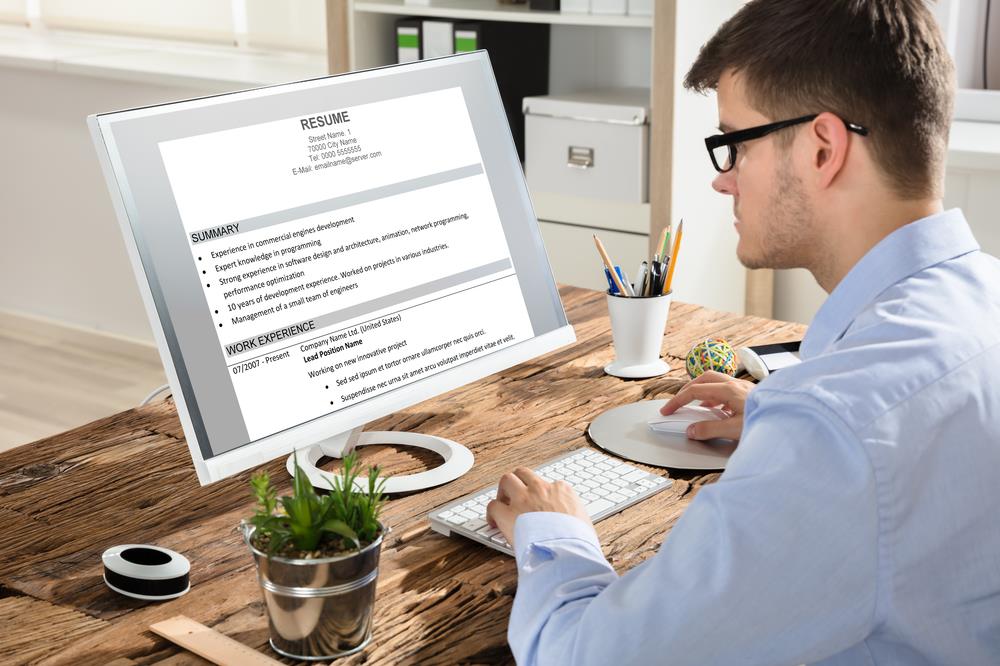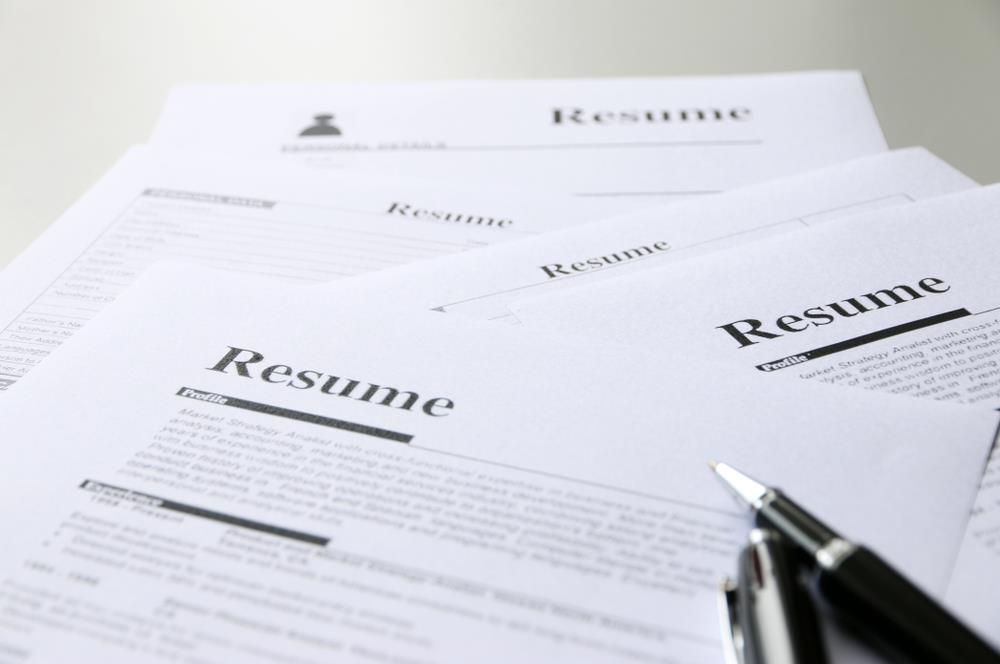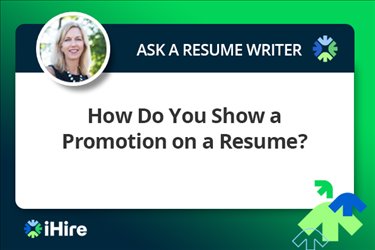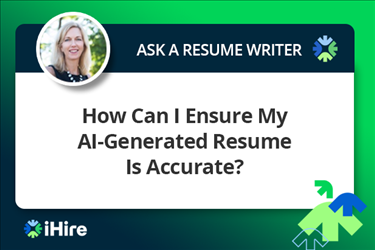- Job Seeker Resources
- |
- Last Updated: May 12, 2021

Learn How to Build a Great Resume with This Web Design Trick
If hiring managers only spend 6–7 seconds before deciding whether to continue reviewing your resume, how do you make sure they see the most critical information? How can you know for sure what a good resume looks like?
No more wondering how to build a great resume because we’ve found the answer: rely on a simple resume design that places your key information in the top half of the first page, also known as “above the fold.”
What is “the fold,” and why does it matter to resume writing?
The phrase “above the fold” originated with newspapers, referring to what passersby could see when the papers were folded in half and displayed in a newsstand. Since then, it has been adapted by web designers to mean what users see before scrolling down a webpage.
When it comes to resume writing, “above the fold” refers to the top half of the first page. Including your best information in such a prominent position can help convince employers, recruiters, and HR personnel to continue reviewing the rest of your resume or call you in for an interview. All modern resume design ideas utilize this principle, but the most awesome resume layouts leverage this concept to get hiring managers to “buy in” to your application.

What information should I emphasize on my resume?
Deciding how to build a great resume for your job search begins with identifying the most critical information related to your skills and experience. Your name, contact information, and target job title should be displayed at the very top of the document so HR personnel can tell at a glance that you are applying for the correct position and know how to get in touch with you.
You should also include a brief summary section that gives a general overview of who you are and your career up to this point. Beneath this is a list of core competencies you hold that are essential to each position you apply for. This simple resume design tactic immediately shows your readers that you are a strong match for their opening.
Once you’ve gotten through this basic information, there are any number of resume design ideas and awesome resume layouts you can use to present your career in the best possible light. There are few real “rules” for resume writing, so you have to ask yourself the following questions to determine the best resume strategy for your situation:
- What data is most helpful to my job search?
- What will be most impressive to employers?
- What will make me the most attractive candidate for this job?

What is the best resume strategy for me?
What a good resume looks like depends on an individual’s objective and career history. A great strategy for one job seeker may be ineffective for another. Here are some common situations and tactics to get key information above the fold:
- Professional experience: If your career history closely aligns with your target position, the reverse chronological listing of your previous jobs should follow your summary paragraph and core competencies section. Your latest position should be the primary focus of this section, as hiring managers are most interested in what you’ve accomplished recently.
- Career highlights: For job seekers using the hybrid resume format, this section will go next. This resume design idea can push your greatest 3–5 achievements to the forefront and help you stand out from the competition within seconds.
- Relevant experience & select achievements: For career changers, those with large employment gaps, or other extenuating circumstances, a segment focused on skills and accomplishments can be most effective and should be placed near the top of the resume. For those using a functional resume format, this section will allow you to highlight how you’ve demonstrated key proficiencies regardless of whether your role was paid or unpaid.
- Education: Recent graduates may be best served by moving their education section into a prominent position on their resumes. Because this is your primary qualification and the basis of your knowledge of your field, it is critical to your application. This section should include your school, graduation date, and degree, as well as any special projects, research initiatives, or relevant extracurricular activities you were involved in.
- Licenses/certifications: If you work in an industry where you need particular licenses or certifications to perform different tasks, you may want to include these in a short section beneath your core competencies. Don’t make prospective employers search through your entire resume to figure out whether you’re qualified for the job: get that information up front.
Register to Find Your Next Great Job
Don’t forget that an effective resume format is, most importantly, easy to skim. Hiring managers frequently have stacks of resumes to sift through, and they just don’t have the time to read every detail of each resume on their first pass. Take this into account and break up your text by incorporating symbols/bullets, allowing for ample white space between sections, and using larger font sizes for your name, prospective job title, and section headers.
For more on how to build a great resume and navigate your job search, check out our other career advice articles. Or, if you’d rather just leave the resume writing to the experts, take a look at iHire’s various resume writing services and find the one that’s right for you.
Sign In or Register to access all articles and insider tips for help in your job search.
Search for iHire Jobs
RELATED JOBS
Warehouse Manager, Columbus Position Overview: The Warehouse Manager is responsible for managing...
Architectural Sales RepresentativeResponsible for the selling, promoting and specifying of Florida Tile / Panaria Group products...
Retail Sales Leader - Self-serveWhy we will love you You care about making a positive impact in the world. You understand...
Clinical Supervisor LISW/LPCC (Hybrid)Clinical Supervisor LISW or LPCC required Full Time $70-$72k salary A Great Opportunity At...
DriverJob Details Job Location : Columbus, OH Salary Range : Undisclosed Description Hollywood Feed...
RELATED RESOURCES
Find the Right Job Faster
- Get personalized job matches sent to your inbox every day
- Connect directly with employers before your competition
- Advance your career with expert advice on interviewing, salary negotiation, and more
We value your privacy

![Beat the Bots, Impress the Boss: Modern Resume Tips That Work [Video Webinar]](https://p-gpb8fhd4b9fbh6fy.z01.azurefd.net/cms/2d501210-a587-4b04-8f52-9470b916664c/5f311c3a-8c49-4464-b28b-0568b2eafc97-md.png)


